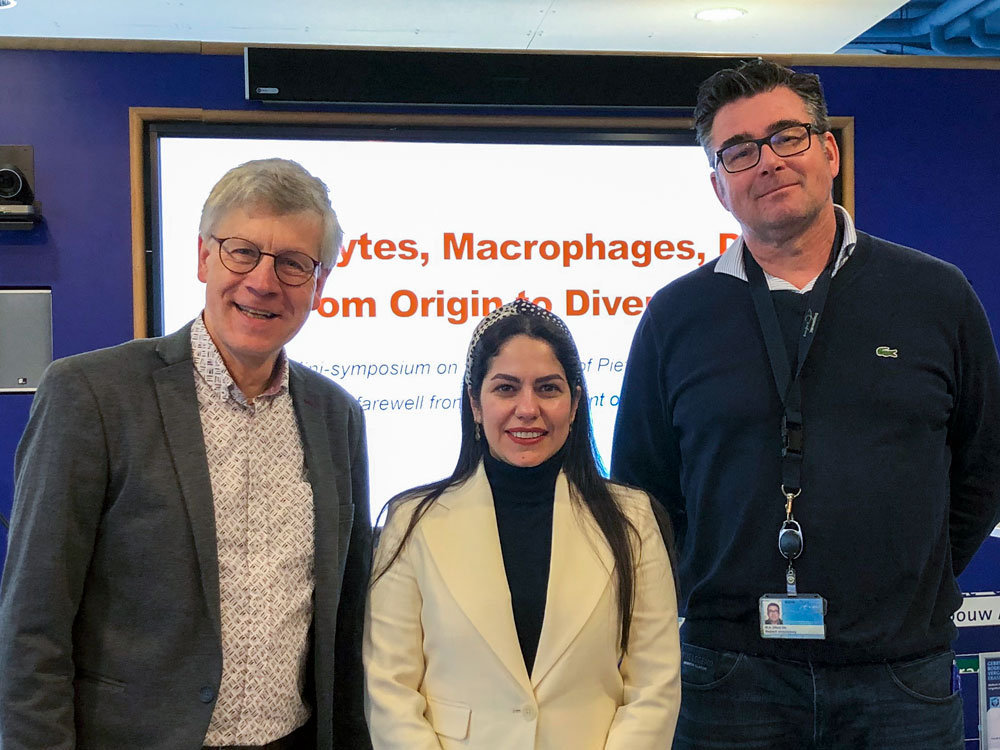PROJECT TITLE: Aberration in myeloid-derived pro-angiogenic cells in type-2 diabetes mellitus; implication for diabetic retinopathy?
Mahnaz Shariatzadeh1, Trishka R.R. Binda1, Conny van Holten-Neelen2, Josianne C. ten Berge2, Jose P. Martinez Ciriano4, King T. Wong4, Willem A. Dik2 and Pieter J.M. Leenen2
1Department of Immunology, Erasmus University Medical Center, Rotterdam, Netherlands. 2Department of Immunology, Erasmus University Medical Center, Rotterdam, Netherlands. 3Department of Ophthalmology, Erasmus University Medical Center, Rotterdam, Netherlands. 4Rotterdam Eye Hospital, Rotterdam, Netherlands.
PURPOSE: Diabetic retinopathy (DR) is a major microvascular complication of type 2 diabetes mellitus (T2DM). Myelomonocytic proangiogenic cells (PAC) have been implicated in DR pathogenesis, but their functional and developmental abnormalities are unclear. In this study we assessed PAC characteristics from healthy controls. T2DM patients with DR and without (NoDR) in order to determine the consequence of the diabetic condition on PAC phenotype and function, and whether these differ between DR and NoDR patients. METHODS: PAC were generated by culturing PBMC on fibronectin coating and then immunophenotyped using flow cytometry. Furthermore, cells were sorted based on CD14, CD105, and CD133 expression and added to an in vivo 3-D endothelial tubule formation assay, containing GFP-expressing human retinal endothelial cells (REC), pericytes, and pro-angiogenic growth factors. Tubule formation was quantified by fluorescence microscopy and image analysis. Moreover, sorted populations were analyzed for angiogenic mediator production using a multiplex assay. RESULTS: The expression of CD16, CD105 and CD31, but not CD133, was lower in PAC from T2DM patients with or without DR. Myeloid and non-myeloid T2DM-derived sorted populations increased REC angiogenesis in vivo as compared to control cultures. They also showed increased S100AB secretion, decreased VEGF-A secretion, and similar levels of IL-8, HGF, and IL-3 as compared to healthy control (HC)-derived cell populations. CONCLUSION: T2DM PAC are phenotypically and functionally altered compared to Pac from HC. Differences between DR and NoDR PAC are limited. We propose that impaired T2DM PAC provide inadequate vascular support and promote compensatory, albeit pathological, retinal neovascularization. ACCESS ARTICLE: Click this link
This study was conducted with IRRF Funds: Willem Dik, PhD
